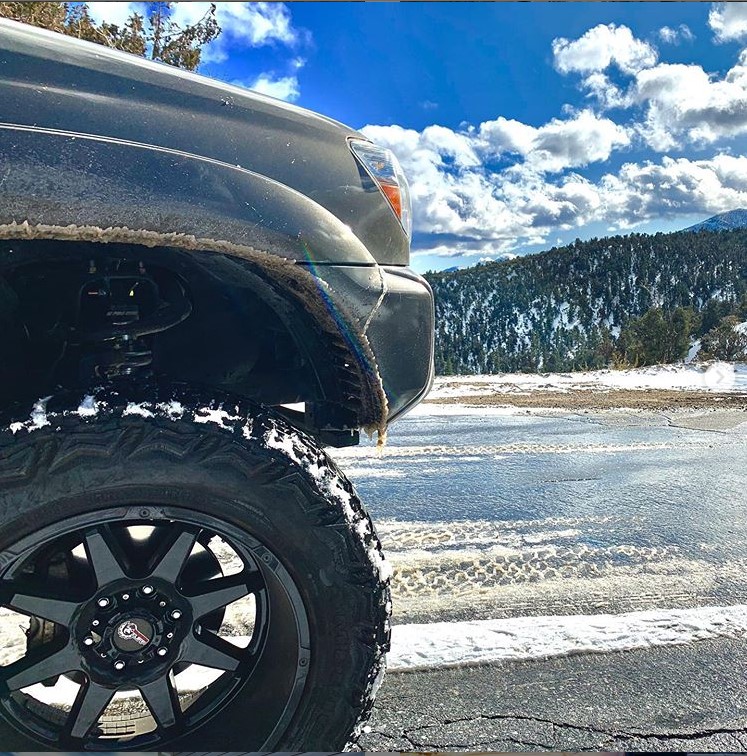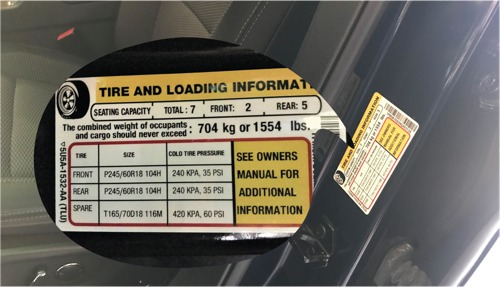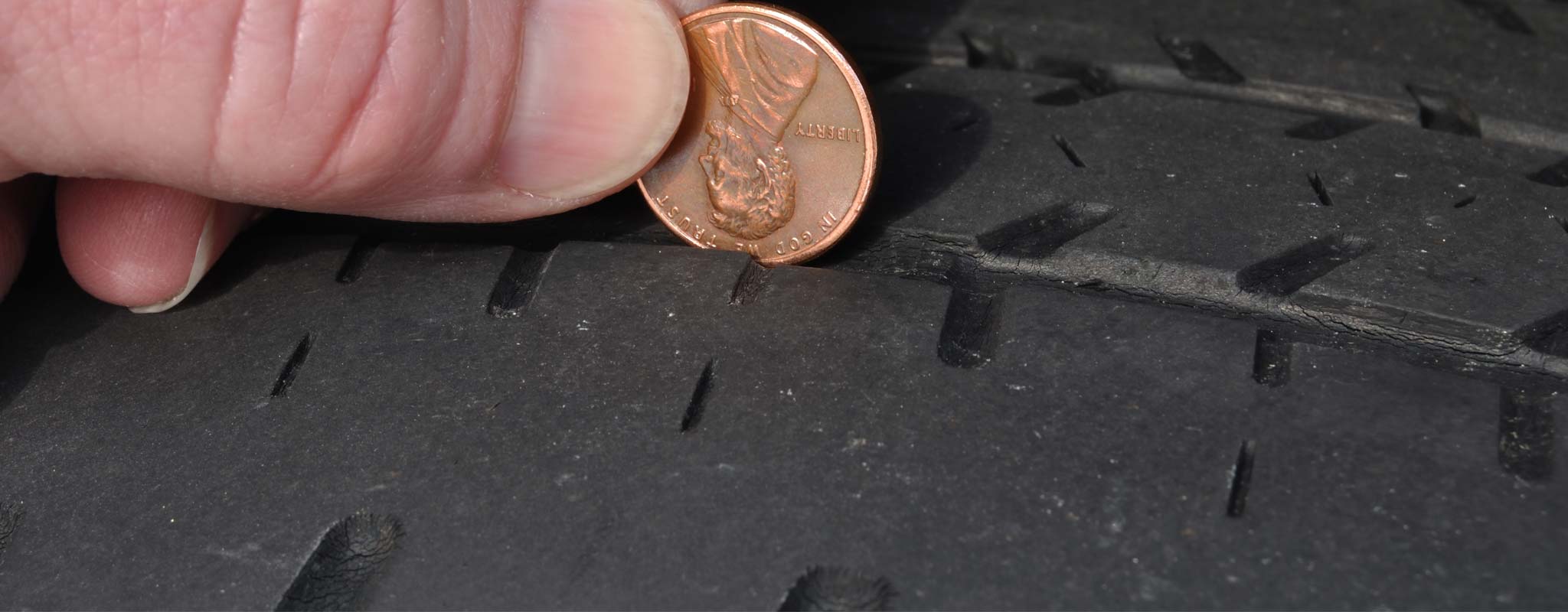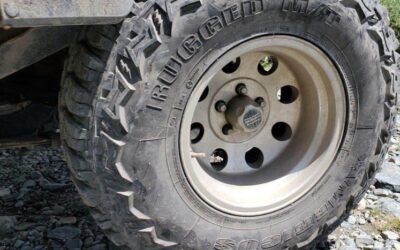With the first official day of Fall behind us, much of the U.S. is seeing cooler temperatures. What does that mean for your tires and why does the low tire pressure symbol always come on during this time of year?
When the outside temperature drops, so does tire inflation pressure. The air inside your tires condenses therefore taking up less space. Tire pressure decreases about 1 PSI (pound per square inch) for every 10°F the temperature drops. You probably see the Tire Pressure Monitoring System (TPMS) warning light come on when you start your vehicle after the first big cold front. You probably also notice that the warning light turns off once you have driven a couple miles and the vehicle starts to warm up. Whether the light goes off or not, your tire pressure needs to be adjusted to the door placard specs. If you have plus sized your tire you will need to consult the manufacturer or tire dealer to ensure your PSI meets the load carry capacity of the vehicle specs. This is easy to do yourself or you can ask your local tire shop to check your tire pressure, many offer it for free.
As a rule, regardless of season, tire pressure should be checked monthly. Do not wait for the light to come on or for your tires to “look low”.
To help stay safe on the road, we recommend the following 123 before you go:
1) Get ready now. Check your tire pressure and adjust as needed. A vehicle’s PSI is listed in the owner’s manual and on the placard inside the driver’s door.
2) Look closely at your tread and replace any tires that have uneven wear or damage such as cracks, punctures, and bulges. Tread should be at least 2/32nds of an inch or greater on all tires. A quick way to test tread depth is to use a U.S. penny. Insert the edge of the coin into the tread with Lincoln going in headfirst. If the top of Lincoln’s head is visible at any location on the tire, it is time to replace.
3) Do not forget your spare tire! Make sure the tire is properly inflated, there are no cracks or uneven wear and you have all the tools needed for installation.
If it is time to replace your tires, Americus offers a wide range of passenger and light truck all-season tires in the most popular sizes. Americus tires are backed by our No Questions Asked, 25/365 Free Replacement Limited Protection Policy. Ask your local tire retailer about Americus tires today!
Stay safe!
Plus Sizing Tires
Plus sizing, in the simplest terms, is when the size of the tire and/or wheel is increased from the original size put on the vehicle by the manufacturer. Plus sizing tires can dramatically change the look and stance of your vehicle and if done correctly no change to the Engine Control Module (ECM) would be required.
Top Issues Drivers have with their Tires
Cracked and Bulging tires usually comes from hitting something. Under-inflation and over-inflation put tires at a greater risk of damage from impacts. Large cracks in the sidewall that runs along the rim are either impact-related or caused by chronic under-inflation....
How Do You Find The Correct PSI Needs For Your Car?
Finding the right amount of PSI (PSI definition: PSI is a unit of pressure expressed in pounds of force per square inch of area. It stands for Pounds per Square Inch) for your tires can sometimes be tricky. You want to make sure this is as accurate as possible. Never Inflate your tire.






